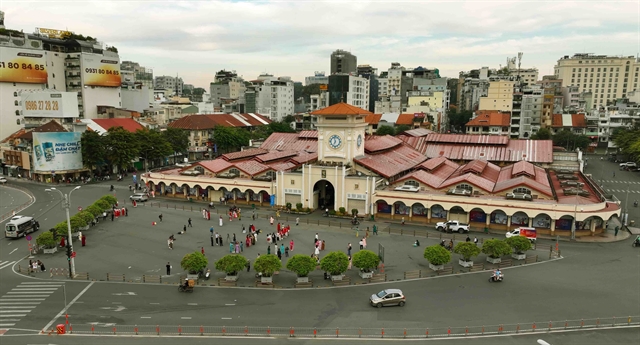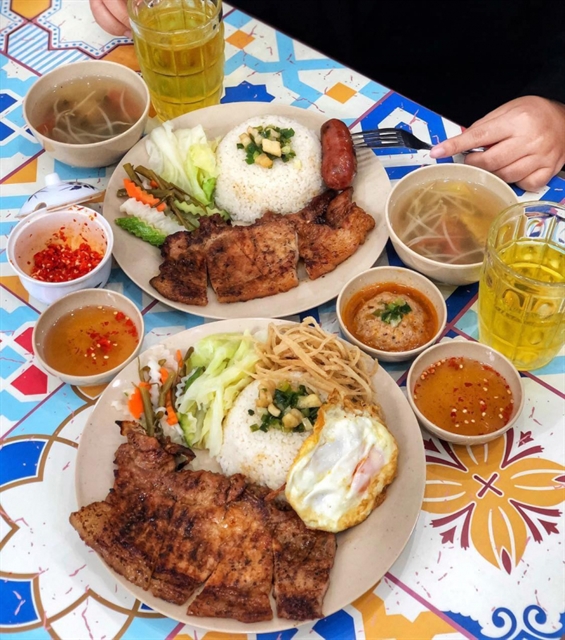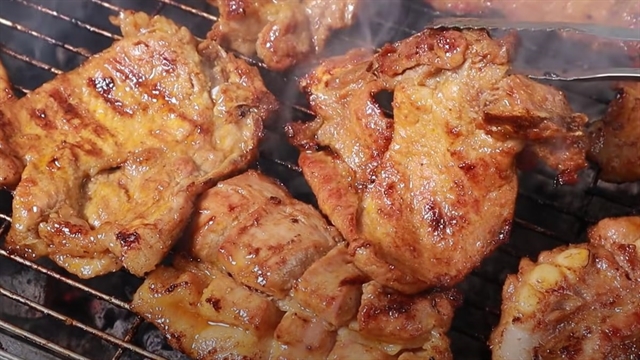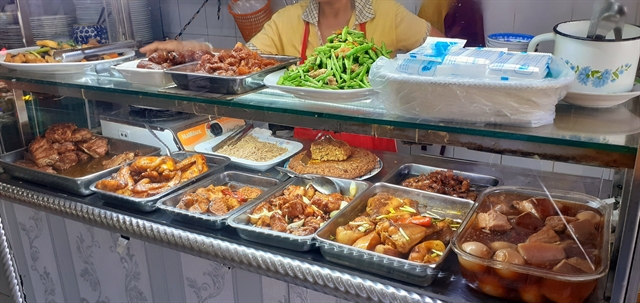 Life & Style
Life & Style

Duy An
Việt Nam’s broken rice (locally known as cơm tấm) was chosen the second place among the top 100 most tasty rice dishes in Asia by TasteAtlas, the home of local food, traditional restaurants, and authentic recipes, in March this year.
This traditional dish of Việt Nam is cooked from broken rice, once considered food for the poor. Still, nowadays, it has become a special popular dish in the country, particularly in Hà Nội and HCM City, TasteAtlas said, noting that Japanese sushi ranked first.
A friend of mine, Chiam Jia Xine from Malaysia, said during his recent trip to Hà Nội, he was interested in not only bún chả (vermicelli with grilled pork and fresh herbs) and rau muống xào (fried morning glory with garlic) but also broken rice.
 |
| Broken rice (or cơm tấm) has become a must-try dish for locals, foreign visitors, and travellers to Việt Nam. — Photo toplist.vn |
“I like broken rice eaten with grilled sour and sweet pork ribs and salad made from the mix of cucumber, tomato slices, minced garlic and chilli,” he said, noting that he enjoyed the dish because the rice is soft, fragrant and sweet.
Different from the Vietnamese habit of using chopsticks, this rice dish is used table wares like those of Western people, he commented.
Came into being from Sài Gòn (now HCM City) in the early 20th century, when the country had entered into the urbanisation process, broken rice has become popular in almost southern provinces to meet increasing demands, said HCM City resident Đặng Hồng Minh, 80.
 |
| Quality colourful broken rice and its accompanied dishes are ready to serve dinners who wish to ship to their home. — Photo toplist.vn |
When becoming the country’s biggest tourism hub, luring a lot of foreign tourists, travellers, and businesses, sellers in the city have served table wares to make the dish suitable for foreign guests instead of using chopsticks and bowls as before, Minh said.
Today cơm tấm has become a symbol of Sài Gòn cuisine. It is often said that “Sài Gòn people eat broken rice as much as Hanoians eat phở (noodle soup)”.
In the past, cơm tấm was considered rice for poor people because the broken rice was considered chicken food. But when people discovered it's tastier and rich in protein and vitamins such as B1, it became a famous speciality that local dinners and foreigners wish to enjoy, Minh said.
 |
| Rib cutlet is one of favourite dishes eaten with broken rice at dinners. — Photo luongthuc.org |
The main ingredients to be eaten with a cơm tấm plate include grilled sour and sweet pork ribs, nem chạo (boiled pork skin cut into threads, cut bacon mixed with fish sauce, roasted rice powder and spice) and many others.
Restaurants are serving broken rice with fried tofu, braised pork and steamed egg mixed with minced pork, vermicelli pieces, wood ears, fragrant mushroom, fresh onions and spicy (locally known as cơm tấm chả); fried fish, and boiled chicken, said Minh.
 |
| There are many dishes, including boiled chicken and fried or braised fish, to be suitably eaten with cơm tấm. — Photo ticotravel.com.vn |
There are different styles of cơm tấm. They include broken rice cooked in a tinny earthen pot, fried broken rice in Vietnamese or Thai recipes or cơm chảo, which means broken rice, vegetable, meat and eggs are poured into the pan, stirred and enjoyed hot.
In 2012, CNN remarked street broken rice is an attractive and popular dish in Sài Gòn, while in August of the same year, the Asia Book of Records recognised Sài Gòn broken cuisine value together with nine other Vietnamese dishes.
Furthermore, EBS TV of South Korea also praised broken rice as the special characteristics dish of Sài Gòn, saying those visiting the city and failing to try the dish may not fully understand it. — VNS




